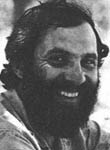From the moment he became ancient Israel’s first king, Saul seemed destined for tragedy. Rather than founding a royal line—like David would do—Saul faced setback after setback, which culminated in his humiliating death. Even while recording Saul’s slow disintegration, 1 Samuel recounts the meteoric rise of the young David as Israelite hero and eventual monarch. Jan P. Fokkelman examines the intertwined lives of these two fascinating personalities. In “Saul & David—Crossed Fates,” Fokkelman lays bare the saga’s narrative structure, which reveals how what happens to Saul is carefully balanced by what happens to David. Saul’s failure to annihilate the detested Amalekites and his subsequent defeat by the Philistines sharply contrast with David’s victories against both these enemies. The biblical account, Fokkelman shows, skillfully weaves the story of Saul and David into a powerful lesson.

Fokkelman was born in 1940 in Jakarta (then called Batavia), Indonesia. After he and his parents survived the Japanese internment camps, they settled in his parents’ homeland, Holland. At the State University of Leiden, Fokkelman lectures in the Department of Hebrew, Aramaic and Ugaritic. He is currently working on a four volume project, Narrative Art and Poetry in the Books of Samuel. The first two volumes, King David and The Crossing Fates, have already appeared.
A new department, Glossary, premieres in this issue. Each glossary will treat terms or concepts frequently used in biblical scholarship and frequently not clearly defined. Harvey Minkoff inaugurates the department with an exposition of “Semite, Semitic, Semitic Languages.”
Associate professor of English linguistics at Hunter College, in New York City, Minkoff has written six books on language and writing, including Visions and Re-Visions, to be published this year by Prentice-Hall. His most recent BR article, “Coarse Language in the Bible? It’s Culture Shocking!” appeared in April 1989.
So many gulfs—those of time, geography and language, to name just three—separate us from the world of the Bible that to apprehend it clearly would seem a daunting task. Daunting perhaps, but not impossible, as W. D. Davies deftly demonstrates in “My Odyssey in New Testament Interpretation.” In this sweeping reminiscence, which overflows with a lifetime of insights, Davies examines one particularly unfortunate misapprehension of the Bible, the long-held view that the New Testament was essentially a Hellenistic, document, and instead shows its roots to be firmly planted in the same fertile ground of the Hebrew Bible that nurtured rabbinic Judaism. Davies includes an examination of the structure of the Sermon on the Mount, highlighting similarities to a rabbinic text

Born in Wales, Davies is now professor emeritus at Duke University. The author and editor of numerous books and articles, Davies focuses on the interaction of Judaism and Christianity. He is co-editor with Louis Finkelstein of the Cambridge History of Judaism. His books include Paul and Rabbinic Judaism, The Setting of the Sermon on the Mount Invitation to the New Testament.
Beginning with Abram in Genesis, many of the Bible’s leading actors strode across the arid Negev. In “The Negev—The Southern Stage for Biblical History,” Oded Borowski helps us to envision this region’s terrain—furrowed by canyons with dry watercourses, patterned by windblown sand, eroded into massive craters—yet home to a series of unusual, often hard-bitten cultures.

As senior staff member of the excavation at Tel Halif (probably biblical Rimmon) in the northern Negev, Borowski often returns to his former home at nearby Kibbutz Lahav, where the excavation team is based. Chairperson of the Department of Near Eastern and Judaic Languages and literatures at Emory University, in Atlanta, Georgia, Borowski is the author of “The Sharon—Symbol of God’s Abundance,” BR 04:02.
“Can Scholars Take the Virgin Birth Seriously?” BR 04:05, generated an unprecedented number of letters to the editor. To give our readers a forum for the many concerns expressed in those letters, we printed in the February 1989 BR 26 letters (see Readers Reply, BR 05:01), most of them objecting to author J. Edward Barrett’s presentation. The torrent of letters has not ebbed; in this issue, another 17 letters—many of them countering readers’ criticisms of the article, appear in a special Readers Reply section, introduced by BR editor Hershel Shanks. (Our regular Readers Reply focuses on reactions to Phyllis Trible’s Miriam.)

